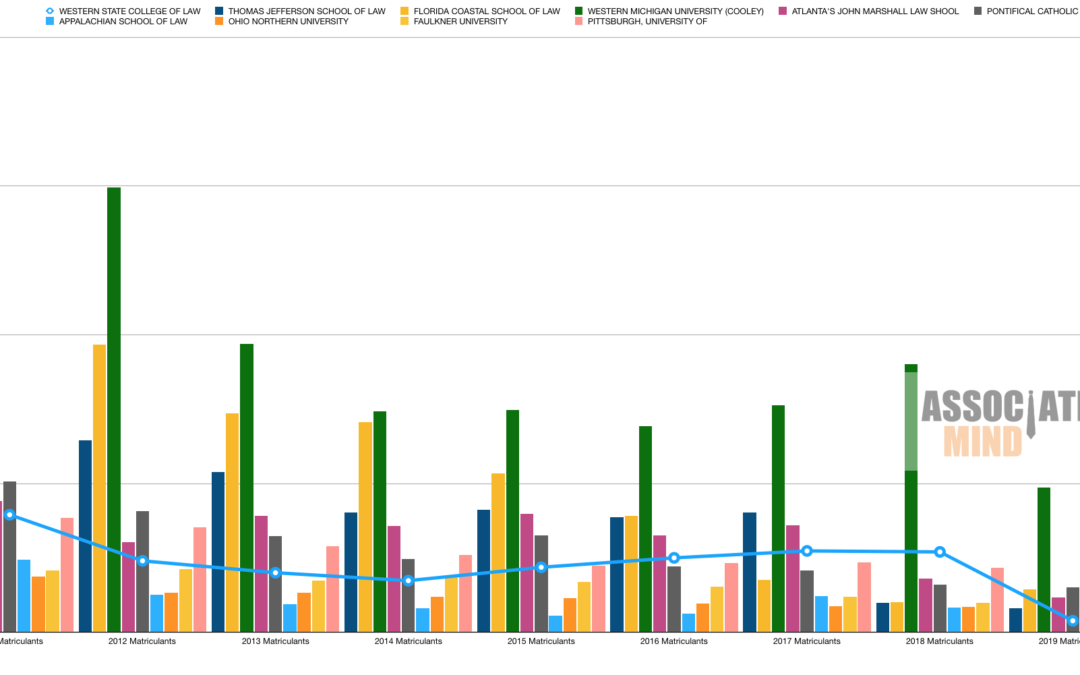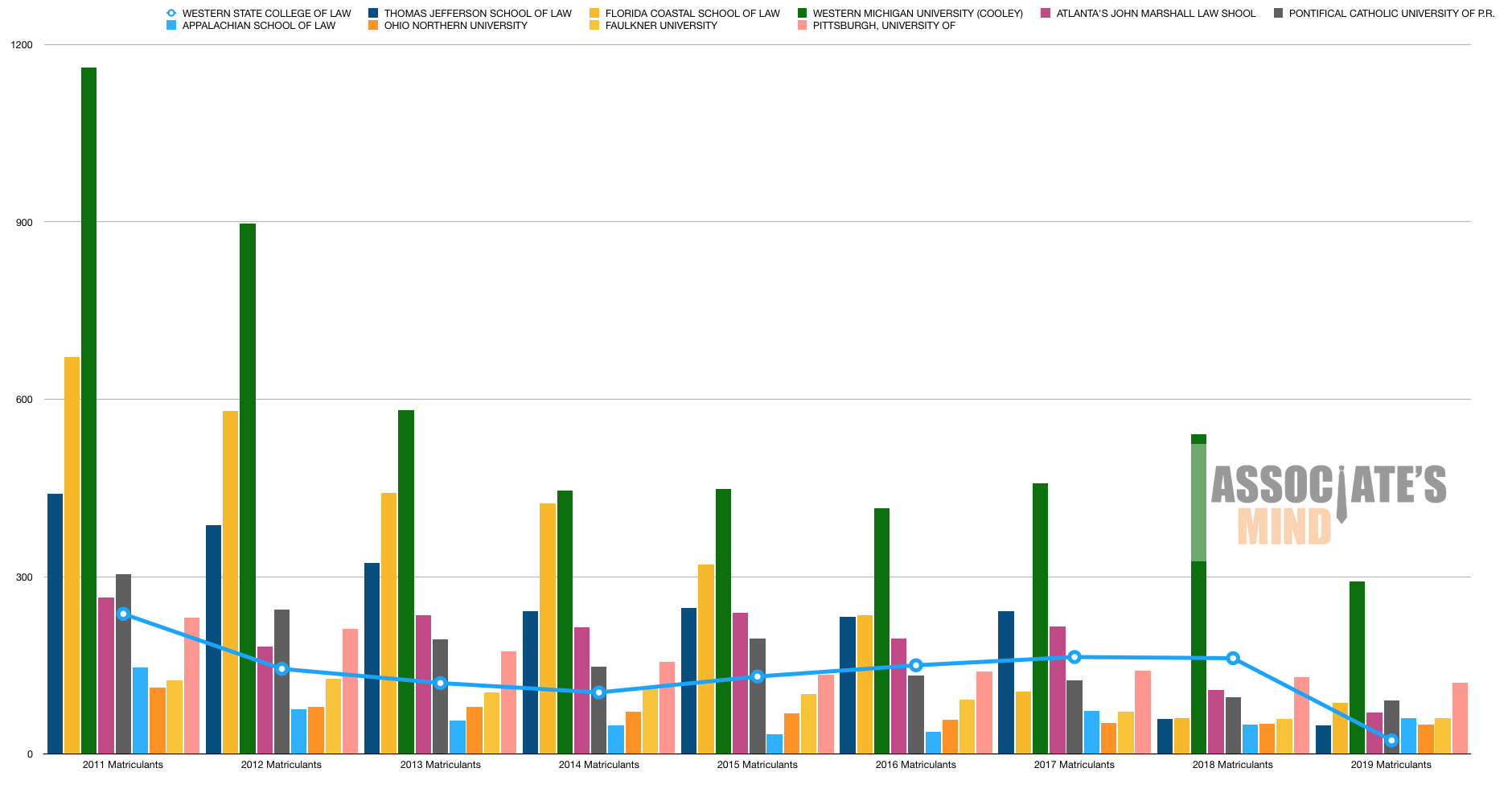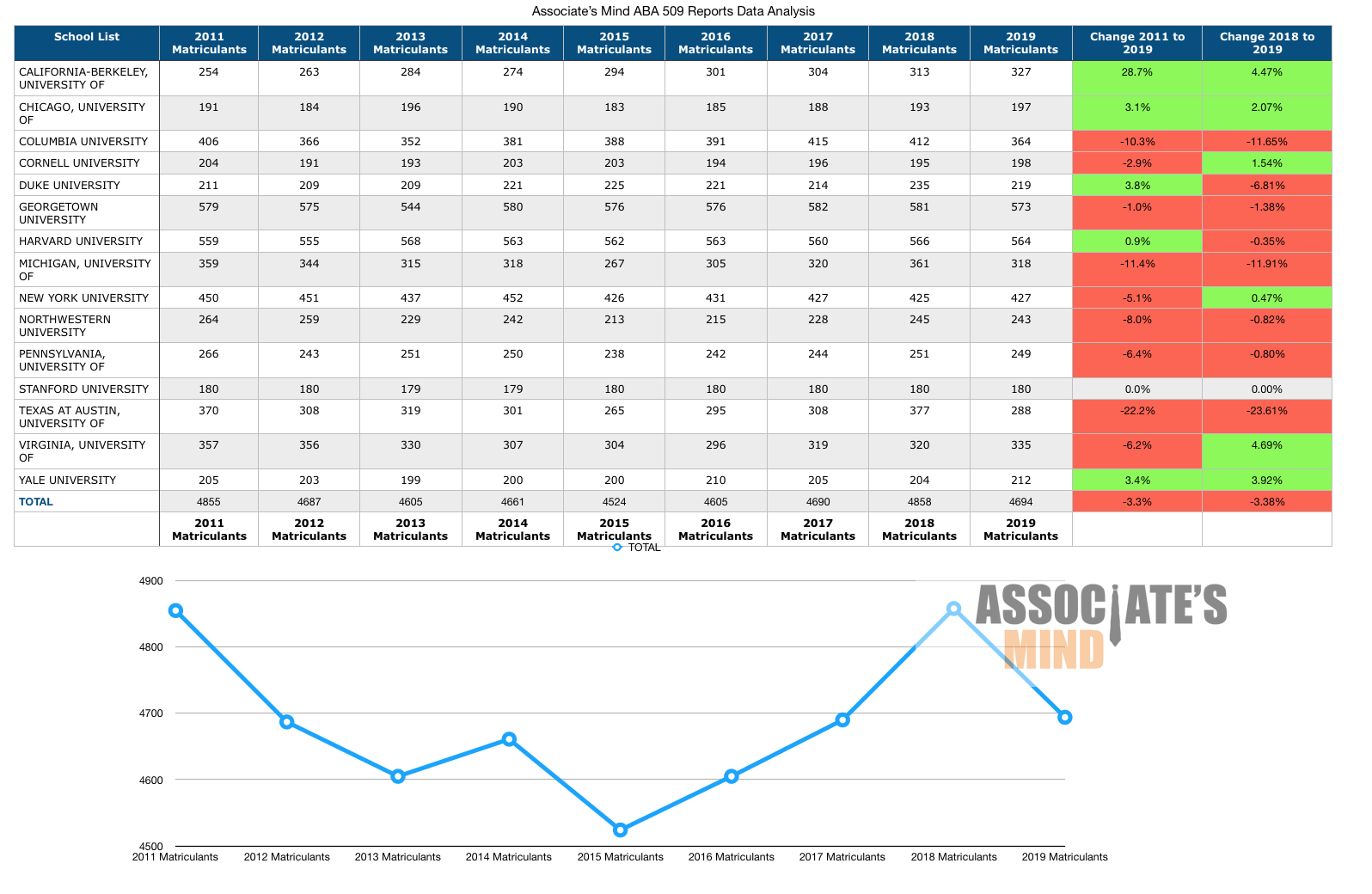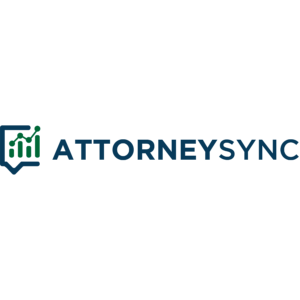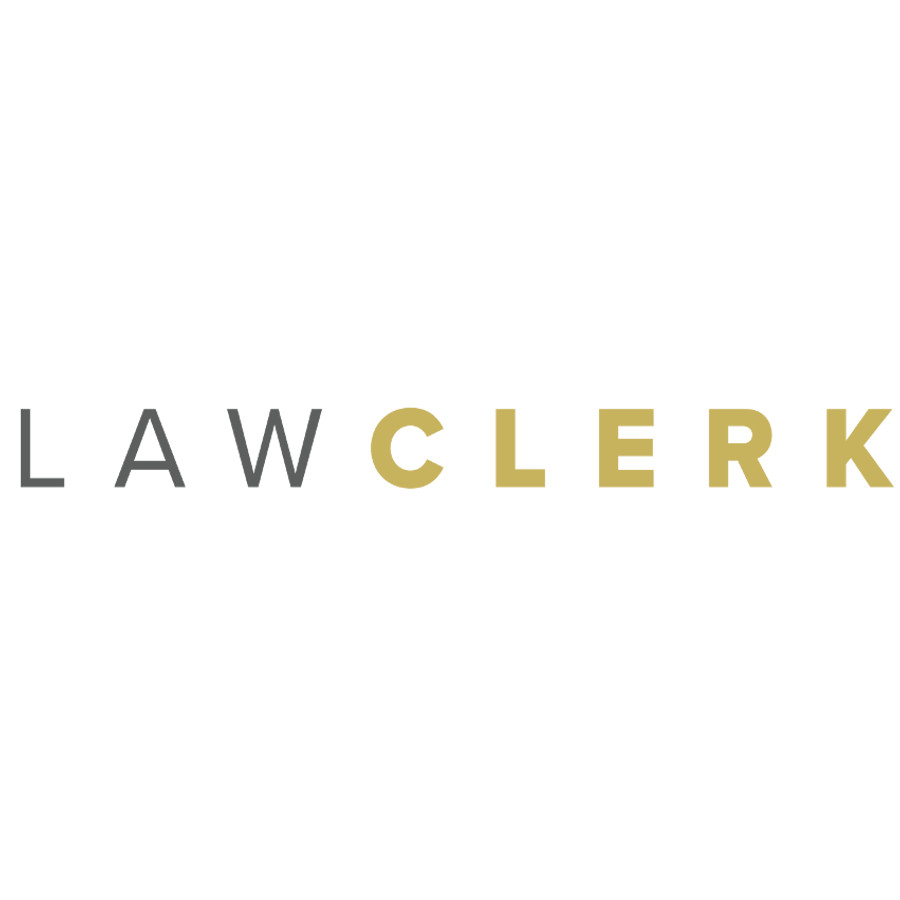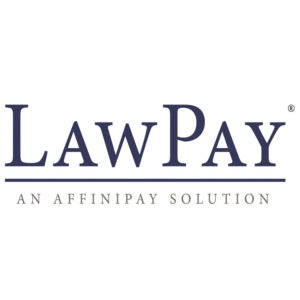Another year, another data dump. December 15th is the annual reporting day for ABA 509 Disclosures for all ABA approved law schools. These are required public disclosures that law schools must make as part of their ABA accreditation. As soon as the ABA started releasing the data, I began to compile it and release reports at Associate’s Mind.
Warning: before you continue, this post includes huge images and graphs. If you’re on mobile, you’re probably better off waiting until you reach a desktop.
2014: Dumpster Diving Into the ABA’s 509 Information Reports (Statistics + Graphs)
2015: 2015 ABA 509 Disclosures: Fifty Shades Of Grey
2016: ABA 509 Disclosures For All Law Schools 2016
2017: Law Schools ABA 509 Disclosures 2017 (Stats + Graphs)
2018: Law Schools ABA 509 Disclosure Reports 2018 (Stats + Graphs)
Before we begin, here is the current 2011-2019 data for all law schools sorted alphabetically if you want to just find your school.
2011 To 2019 Changes
Law school enrollment continues to be significantly down since reporting began.
Total matriculant change from 2011 to 2019: -17.9%.
Downward trends
34 law schools are now dead: Arizona Summit, Charlotte, Valparaiso, & Whittier. Arizona is the additional dead school.- 149 law schools decreased in matriculants from 2011 to 2019.
- 9 schools had matriculants decrease by over 50% from 2011 to 2019.
- 106 law schools had a double digit percentage decrease in matriculants since 2011.
- Largest decrease: Western State at -90.3%
- Runner-up decrease: Thomas Jefferson at -88.9%
Top ten largest percentage decreases from 2011 to 2019
| WESTERN STATE COLLEGE OF LAW |
-90.3% |
|||||||||
| THOMAS JEFFERSON SCHOOL OF LAW |
-88.9% |
|||||||||
| FLORIDA COASTAL SCHOOL OF LAW |
-87.0% |
|||||||||
| WESTERN MICHIGAN UNIVERSITY (COOLEY) |
-74.8% |
|||||||||
| ATLANTA’S JOHN MARSHALL LAW SCHOOL |
-73.5% |
|||||||||
| PONTIFICAL CATHOLIC UNIVERSITY OF P.R. |
-70.1% |
|||||||||
| APPALACHIAN SCHOOL OF LAW |
-58.2% |
|||||||||
| OHIO NORTHERN UNIVERSITY |
-55.4% |
|||||||||
| FAULKNER UNIVERSITY |
-51.6% |
|||||||||
| PITTSBURGH, UNIVERSITY OF |
-47.8% |
Upward trends
- 48 schools had no change or increased matriculants from 2011 to 2019.
- 22 schools had a double digit percentage increase in matriculants.
- Largest increase*: Lincoln Memorial at 197.1%
- Runner-up increase: University of Law Verne at 80%
- * Note – Concordia Law School opened in 2012, so naturally their % increase is gigantic, but I don’t include them here as it doesn’t accurate reflect their student body trends.
Top ten largest percentage increases from 2011 to 2019
| BAYLOR UNIVERSITY |
19.0% |
|||||||||
| CALIFORNIA-DAVIS, UNIVERSITY OF |
21.9% |
|||||||||
| CALIFORNIA-BERKELEY, UNIVERSITY OF |
28.7% |
|||||||||
| CITY UNIVERSITY OF NEW YORK |
29.2% |
|||||||||
| PENNSYLVANIA STATE – DICKINSON LAW |
41.8% |
|||||||||
| ARIZONA STATE UNIVERSITY |
62.5% |
|||||||||
| MITCHELL|HAMLINE |
76.1% |
|||||||||
| CALIFORNIA-IRVINE, UNIVERSITY OF |
76.4% |
|||||||||
| UNIVERSITY OF LA VERNE |
80.0% |
|||||||||
| LINCOLN MEMORIAL |
197.1% |
2018 To 2019 Changes
Looking just at the past year-to-year changes, trends remain flat.
Downward trends
- 83 schools decreased in matriculants from 2018 to 2019.
- 1 law schools had matriculants decrease by over 50% from 2018 to 2019: Western State.
- 33 schools had a double digit decrease in matriculants from 2018 to 2019.
- Largest decrease: Western State at -85.5%
- Runner-up decrease: Golden Gate at -46.1%
Top ten largest percentage decreases from 2018 to 2019
| WESTERN STATE COLLEGE OF LAW |
-85.80% |
||||||||||
| GOLDEN GATE UNIVERSITY |
-46.41% |
||||||||||
| WESTERN MICHIGAN UNIVERSITY (COOLEY) |
-46.03% |
||||||||||
| ATLANTA’S JOHN MARSHALL LAW SHOOL |
-35.19% |
||||||||||
| KENTUCKY, UNIVERSITY OF |
-32.45% |
||||||||||
| CALIFORNIA-IRVINE, UNIVERSITY OF |
-31.44% |
||||||||||
| FLORIDA, UNIVERSITY OF |
-30.65% |
||||||||||
| CASE WESTERN RESERVE UNIVERSITY |
-24.20% |
||||||||||
| LOUISVILLE, UNIVERSITY OF |
-23.81% |
||||||||||
| TEXAS AT AUSTIN, UNIVERSITY OF |
-23.61% |
Upward trends
- 117 law schools had no change or increased matriculants from 2018 to 2019.
- 48 schools had a double digit percentage increase in matriculants
- Largest increase: New England Law at 89.7%
- Runner-up increase: New Hampshire at 52.8%
Top ten largest percentage increases from 2018 to 2019
| BELMONT UNIVERSITY |
30.28% |
||||||||||
| SOUTHERN METHODIST UNIVERSITY |
33.17% |
||||||||||
| NORTHERN ILLINOIS UNIVERSITY |
34.44% |
||||||||||
| NORTH DAKOTA, UNIVERSITY OF |
35.48% |
||||||||||
| NORTH CAROLINA CENTRAL UNIVERSITY |
37.86% |
||||||||||
| SYRACUSE UNIVERSITY |
40.74% |
||||||||||
| FLORIDA COASTAL SCHOOL OF LAW |
45.00% |
||||||||||
| CONCORDIA LAW SCHOOL |
50.85% |
||||||||||
| NEW HAMPSHIRE UNIVERSITY OF |
52.75% |
||||||||||
| NEW ENGLAND LAW | BOSTON |
89.73% |
T14+1
How are the elite stacking up?
The elite law schools had a dip like everyone else. And last year they were right at their 2011 levels. But this year things dipped a bit again. Generally speaking, broader trends affecting law schools don’t really touch the elite school.
Also, what’s up with Stanford? They keep a set number of students no matter what?
Closing Thoughts
The “Trump bump” was short lived. Sure more people are back at law school than a few years ago. But that growth is flat. If anything, I anticipate enrollment to begin to decrease again.
Why?
We are in the midst of systematic change to the legal profession. If you’re not aware of it – you’re not paying attention.
Sometime – maybe in the next five years, but certainly the next twenty – lawyers are going to play less and less of a role in many aspects of “legal practice.” In-house corporate departments have realized that they can control costs far better with their own “legal operations” departments; in which lawyers are only a small percentage. And now that model is trickling down to the rest of the industry.
States are exploring how to deregulate re-regulate the profession to allow non-lawyer equity ownership in firms, and relax the rules around UPL. Which means many law firms are no longer going to be lawyer-centered1Of course, good law firms are actually client-centered. In the above, I’m talking how law firms function operationally., but business-centered. There will be managers, designers, developers, and more. Legal services will be delivered through websites, apps, and services. Lawyers will only play a part of it.
Which, if you can’t put two and two together,2If you’re a lawyer, there’s a fair chance you can’t do basic math. means we’re going to need a lot fewer lawyers.
Want to talk about the future of the profession with other lawyers? LawyerSmack.
References

